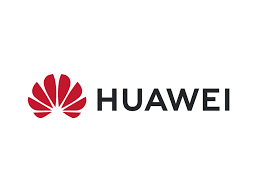[Budapest, Hungary, June 14, 2022] At the 3GPP TSG#96 meeting, 3GPP announced 5G Release 17 finalized, which includes the 5G reduced capability (RedCap) specification for medium- and high-speed connections. This marks the readiness of this new specification. The RedCap specification is established thanks to the joint work between Huawei and global industry partners, who will continue to promote the rapid maturing of RedCap in industry standards, networks, devices, and applications; open up a new space of about 10 billion IoT connections; and accelerate the arrival of an intelligent IoT world.
RedCap is widely used in three major service scenarios: smart wearables, industrial wireless sensors, and video surveillance. It is estimated that the number of IoT connections worldwide will reach nearly 10 billion by 2030. The preceding three services have far lower requirements for data rates than eMBB services but higher requirements than Low Power Wide Area (LPWA) networks such as NB-IoT and LTE-M. As such, RedCap devices will be positioned as a lower segment than eMBB devices, but higher than LPWA devices in terms of technical features, achieving a balance between network performance and device costs.
Compared with NR, RedCap is simplified and customized in many aspects, including:
Low cost: The maximum bandwidth requirement for a RedCap device in the sub-6 GHz frequency band is reduced to 20 MHz. RedCap reduces the number of receive antennas and layers of devices required and supports 1R or 2R, greatly reducing the cost of 5G device chipsets and modules. It is estimated that the cost of RedCap modules is five times lower than that of eMBB modules and the price of modules for large-scale commercial use is comparable to that of Cat 4 modules.
Large capacity and efficient coexistence: RedCap devices can run on 5G networks through separate initial BWPs and non-cell-defining synchronization signals and can coexist efficiently with eMBB devices, fully leveraging 5G’s advantages — high bandwidth and large capacity (compared with 4G).
More optional functions available: low latency, slicing, positioning, low power consumption, and more.
RedCap has attracted attention and investment from different players for its commercialization. RedCap can be redefined to adapt to different scenarios, technologies, and product solutions of various industries such as electric power, smart city and manufacturing. The “Set Sail” Action Plan for 5G Applications (2021-2023) issued by the Ministry of Industry and Information Technology (MIIT) and nine other departments in China states that we should accelerate the R&D and industrialization of lightweight 5G chipsets and modules to deliver more cost-effective devices and achieve an average annual growth rate of over 200% in the number of 5G IoT device users. The IMT-2020 (5G) Promotion Group is dedicated to promoting the commercial use of RedCap in industries. The group plans to complete the research on RedCap applications and key technologies, develop test specifications, and test these key technologies in 2022. In addition, the group plans to formulate specifications of devices, system equipment, and tests and carry out end-to-end tests and interoperability tests in 2023.
Currently, 5G has been put into large-scale commercial use globally to empower various industries and will light the road to business success. Huawei will work with industry partners to promote the commercial use of RedCap; accelerate the maturing of industry standards, networks, and devices; explore industry-specific applications; and facilitate digital transformation and upgrade of various industries.


